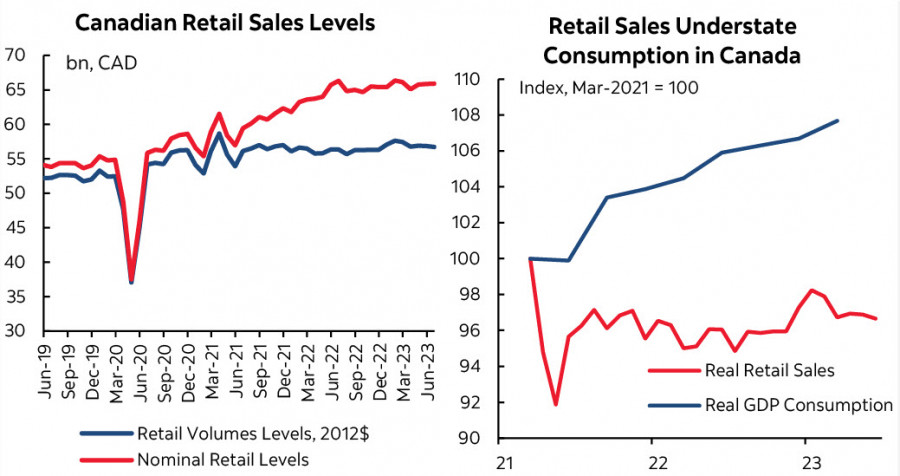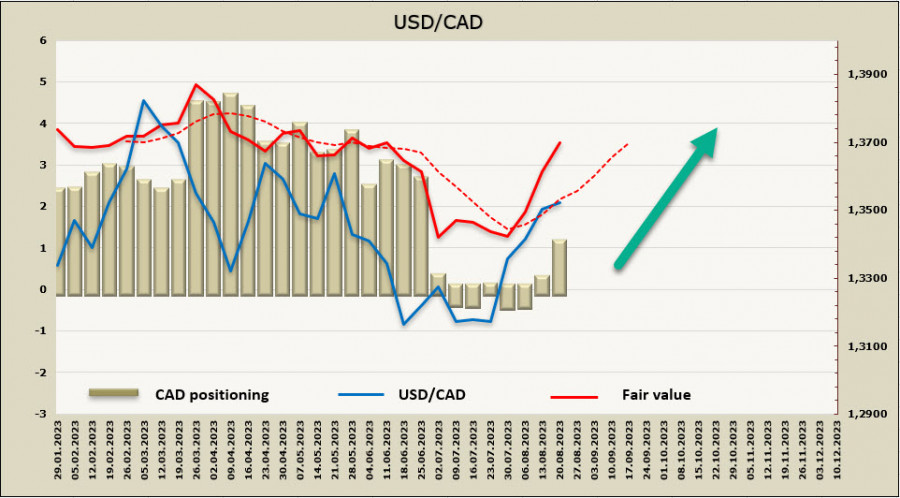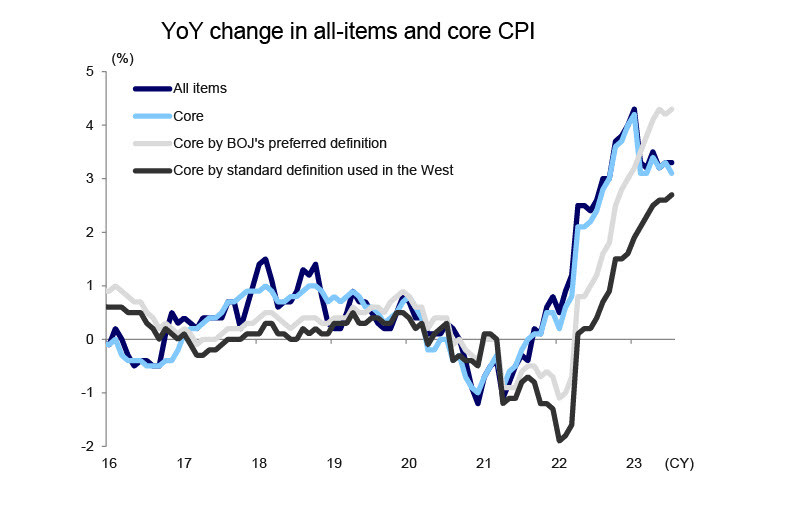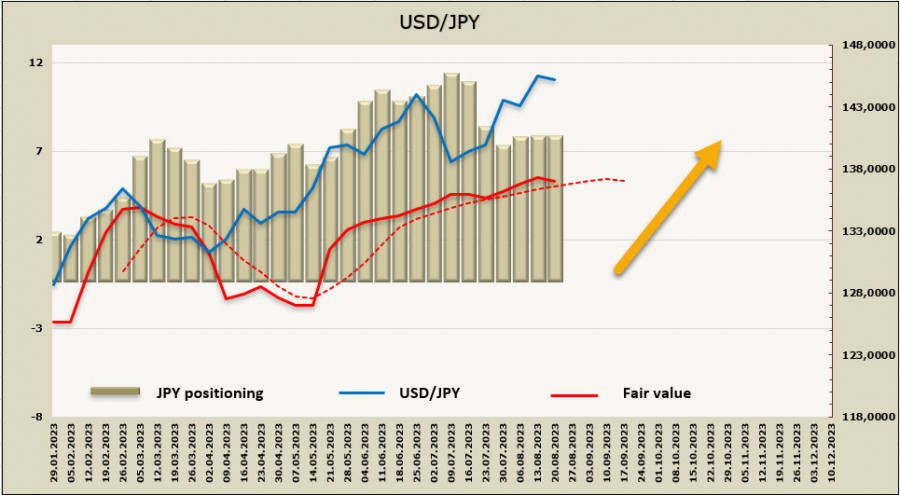Global bond yields have noticeably fallen in the last 24 hours after softer-than-expected preliminary PMI data. A significant drop in activity has been noted in the eurozone's services sector, especially in Germany. This reduces the chances of the European Central Bank raising rates in September and weighs on the euro.
On Thursday, the market will focus on the report on durable goods orders and the weekly unemployment benefits.
USD/CAD
Retail sales in Canada showed weak results, leading to a decline in yields of short-term Canadian government bonds and a decrease in the CAD exchange rate.

At the same time, the pace of growth in average wages remains high, as the labor market supply lags behind demand. To curb inflation, there needs to be a swift deceleration in wage growth, which is only possible in conditions of a saturated labor market or a general economic slowdown. Another route is an increase in productivity, which remains low with no signs of improvement yet.
The net short position on CAD increased by CAD 799 million for the reporting week, reaching CAD -845 million. Positioning is bearish, and the price is moving upwards.

A week earlier, we assumed that the upward movement would progress, and the main target is the upper band of the channel at 1.3690/3720. This target remains relevant. The consolidation is due to technical reasons rather than fundamental ones, and after the consolidation or minor correction concludes, we expect to see further growth. We perceive support in the middle of the channel at 1.3360/80, but a potential decline to this zone before turning upwards seems unlikely.
USD/JPY
The core inflation rate (excluding fuel and food prices) in July accelerated from 4.2% to 4.3%, indicating that the Bank of Japan's cautious policy hasn't yielded significant results yet. The BOJ is the only one among major central banks continuing an ultra-soft policy, based on the assumption that inflation largely has an imported nature and will decrease as soon as global energy prices stabilize and the previously disrupted supply chains of goods and raw materials are restored.

Such an approach might be justified, but the growth in core inflation indicates that there's more to it, and the Bank needs to be very cautious in choosing its next steps. The Ministry of Finance plans to allocate 28,142.4 billion yen to service the national debt in the 24th fiscal year, which is 2,892.1 billion yen more than in the 23rd fiscal year. The rate used to calculate JGB bond servicing costs remained at 1.1% for seven years, from the 17th to the 23rd fiscal year. If the Bank of Japan begins to raise the accounting rate, the calculated rate for servicing will also be increased for the first time in 17 years.
Currently, there are no problems in servicing the national debt, but by the end of the 22nd fiscal year, the outstanding volume of JGBs amounted to a staggering 1,027 trillion yen. If Japan's economy continues to grow, increasing tax revenues will allow the debt to be serviced without significantly increasing borrowing. However, if the global economic crisis intensifies, an increase in the BOJ's rate will lead to a rapid increase in the government's debt servicing expenses.
For now, we must assume that any hints at an interest rate hike will lead to the yen's growth, complicating the debt servicing situation due to a deteriorating trade balance and reduced budget revenues. The Japanese government fears this scenario, hence any comments on monetary policy will continue to be very cautious. In the current circumstances, the yen is more likely to depreciate than strengthen.
The net short position on JPY was slightly adjusted by 300 million, to -6.952 billion, with positioning decidedly bearish. The price is above the long-term average, the trend remains bullish, but the chances of an extended consolidation or a shallow correction has increased.

We expect an uptrend from the USD/JPY, with the upper band of the channel at 147.80/148.10 as the target. The risk of a deeper correction to the middle of the channel at 142.50/80 has increased, but the long-term trend remains bullish, and there's no reason to anticipate a reversal at the moment.
The material has been provided by InstaForex Company - www.instaforex.comfrom Forex analysis review https://ift.tt/fbAHJiv
via IFTTT
